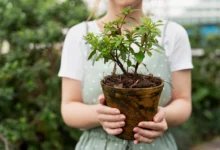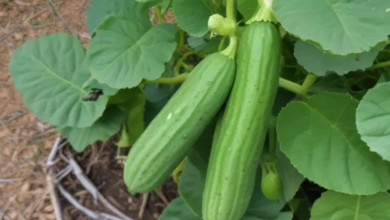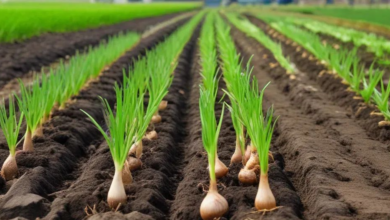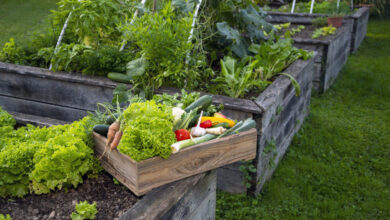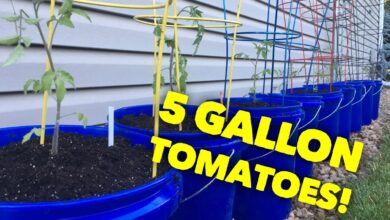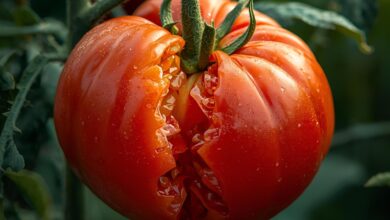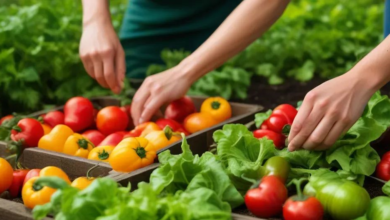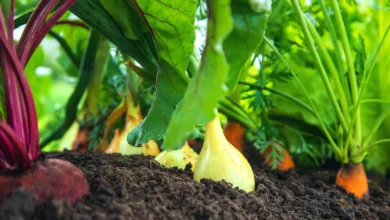Container Gardening Vegetables for Small Spaces
Transform tiny spaces into productive vegetable gardens with Container Gardening Vegetables. Expert tips, best vegetables, and space-saving.
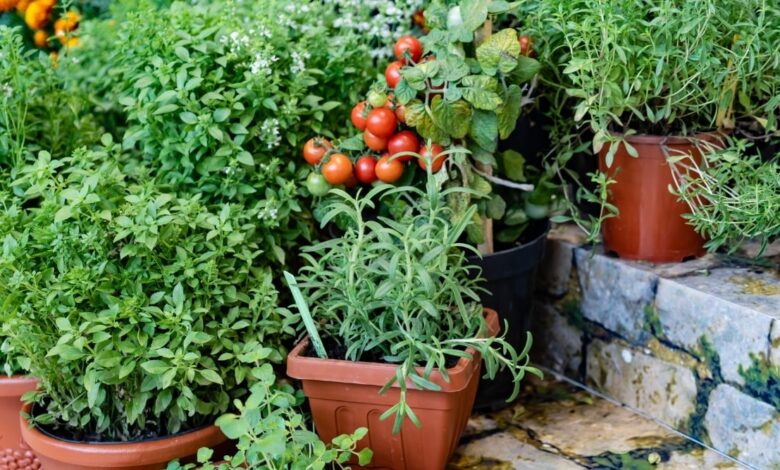
Urban living and limited outdoor space no longer mean you have to sacrifice your dream of growing fresh, homegrown vegetables. Container gardening vegetables for small spaces has revolutionized how modern gardeners approach food production, transforming balconies, patios, windowsills, and even indoor corners into thriving vegetable gardens. This comprehensive approach to small space gardening offers endless possibilities for anyone passionate about cultivating their own food, regardless of their living situation.
The art of container vegetable gardening extends far beyond simply placing a few pots on a balcony. It represents a sophisticated gardening method that maximises productivity while minimising space requirements. Whether you’re a city dweller with a cramped apartment balcony, a suburban homeowner with a small patio, or someone dealing with poor soil conditions, container gardening provides the perfect solution for growing nutritious vegetables in confined areas.
Urban container gardening has gained tremendous popularity as more people recognise its numerous advantages. Unlike traditional in-ground gardening, containers offer complete control over soil quality, drainage, and plant placement. This method allows gardeners to create optimal growing conditions for each specific vegetable variety, resulting in healthier plants and more abundant harvests. Additionally, portable vegetable gardens created through container systems can be easily relocated to capture the best sunlight throughout the day or to protect plants from harsh weather conditions.
The versatility of small space vegetable growing makes it accessible to gardeners of all skill levels. Beginners can start with simple, low-maintenance vegetables and gradually expand their knowledge and container collection. Experienced gardeners can experiment with advanced techniques like vertical growing systems and succession planting to maximise their yields. The controlled environment of containers also reduces many common gardening challenges, such as weeds, soil-borne diseases, and pest infestations.
Modern apartment balcony gardening has evolved to include innovative space-saving solutions that make the most of every square inch. From tiered plant stands to hanging planters and wall-mounted growing systems, today’s container gardeners have access to numerous tools and techniques for creating productive growing spaces in the smallest areas. These methods not only provide fresh produce but also create beautiful, green living spaces that enhance the quality of urban life.
Benefits of Container Vegetable Gardening
Container gardening vegetables for small spaces offers numerous advantages that make it an ideal choice for modern gardeners. The primary benefit lies in the complete control it provides over growing conditions. Unlike traditional gardening, where soil quality and drainage can be unpredictable, containers allow gardeners to create the perfect growing medium for each plant variety. This control extends to watering schedules, fertilization, and pest management, resulting in healthier plants and higher yields.
Space efficiency represents another significant advantage of container systems. Vertical container gardening techniques enable gardeners to grow multiple layers of vegetables in the same footprint, effectively tripling or quadrupling the productive capacity of a small area. This three-dimensional approach to small space gardening transforms walls, railings, and corners into productive growing areas that would otherwise remain unused.
The mobility aspect of portable vegetable gardens cannot be overstated. Containers can be easily moved to follow the sun, protect plants from harsh weather, or accommodate changing seasonal conditions. This flexibility is particularly valuable for apartment balcony gardening, where shadows from buildings or neighbouring structures may shift throughout the year. The ability to relocate plants ensures they receive optimal growing conditions regardless of external factors.
Reduced maintenance makes container gardening especially appealing to busy urban dwellers. The controlled environment of containers significantly reduces weed growth, eliminating hours of tedious weeding. Additionally, the elevated nature of most container systems reduces back strain and makes gardening more accessible for people with mobility limitations.
Extended growing seasons become possible with containers, as they can be moved indoors during harsh weather or placed in protected areas. This capability allows gardeners to continue harvesting fresh vegetables well beyond the typical outdoor growing season, providing year-round access to homegrown produce.
Best Vegetables for Container Growing
Selecting appropriate vegetables is crucial for successful container vegetable gardening. The best choices are varieties that adapt well to confined root systems while still producing abundant harvests. Leafy greens top the list of excellent container vegetables, with lettuce, spinach, kale, and arugula thriving in relatively shallow containers. These fast-growing crops provide quick results and can be succession planted for continuous harvests throughout the growing season.
Tomatoes remain the most popular choice for small-space vegetable growing, though container selection is critical. Cherry and determinate varieties perform exceptionally well in large containers, while indeterminate varieties require substantial support systems. Modern breeding has produced numerous compact tomato varieties specifically designed for urban container gardening, offering full-sized flavour in space-efficient plants.
Herbs deserve special mention as perfect candidates for apartment balcony gardening. Basil, parsley, cilantro, oregano, and thyme not only grow well in small containers but also provide high-value harvests that can significantly reduce grocery bills. Many herbs thrive in partial shade, making them ideal for balconies that don’t receive full sun exposure.
Root vegetables like carrots, radishes, and beets can successfully grow in containers, provided they have adequate depth. Shorter carrot varieties and round radish types are particularly well-suited to container culture. These vegetables offer the added benefit of utilising the full volume of the container, from the soil surface to the bottom.
Peppers of all varieties excel in containers, from sweet bell peppers to hot chilli varieties. Their compact growth habit and prolific production make them excellent choices for portable vegetable gardens. Pepper plants also tend to be decorative, adding aesthetic value to balcony and patio spaces.
Pole beans and peas maximise vertical space utilisation, growing up trellises or support structures attached to containers. These climbing vegetables produce substantial harvests from relatively small containers while adding vertical interest to vertical container gardening systems.
Container Selection and Sizing Guide
The foundation of successful container gardening vegetables for small spaces lies in selecting appropriate containers that provide adequate space for root development while fitting within spatial constraints. Container size directly impacts plant health, productivity, and maintenance requirements, making this decision crucial for gardening success.
Minimum container sizes vary significantly based on the specific vegetables being grown. Leafy greens like lettuce and spinach can thrive in containers as shallow as 6-8 inches, while root vegetables require depths of 12-18 inches depending on the variety. Tomatoes and other large vegetables need substantial containers, with a minimum of 5-gallon capacity for determinate varieties and 10-15 gallons for indeterminate types.
Material considerations play a significant role in container performance and longevity. Plastic containers offer lightweight portability and moisture retention, but may degrade over time with UV exposure. Ceramic and clay pots provide excellent aesthetic appeal and breathability but can be heavy and may crack in freezing temperatures. Fabric grow bags have gained popularity for small space gardening due to their superior drainage, root air pruning properties, and storage convenience.
Drainage requirements cannot be compromised in successful container systems. Every container must have adequate drainage holes to prevent waterlogging, which can quickly kill vegetable plants. The general rule requires drainage holes every 6-8 inches across the container bottom, with larger holes being preferable to smaller ones. Self-watering containers offer an excellent compromise, providing consistent moisture while preventing overwatering. Colour selection affects both plant performance and aesthetic appeal. Light-colored containers reflect heat and keep root systems cooler, while dark containers absorb heat and can stress plants during hot weather. For urban container gardening in areas with intense summer heat, light-colored or reflective containers significantly improve plant health and productivity.
Soil and Growing Medium Essentials
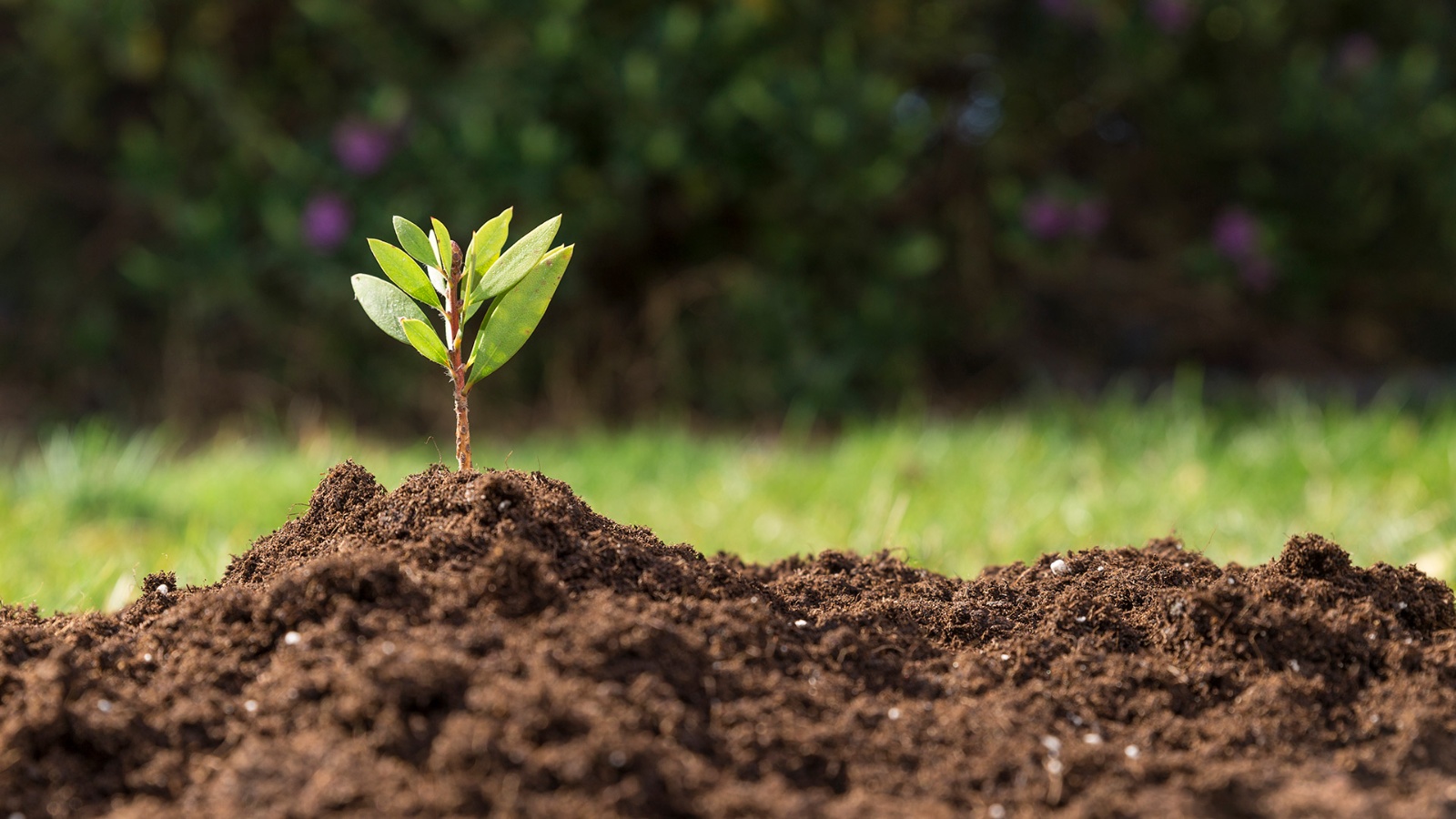
The growing medium represents the foundation of successful container vegetable gardening, and the quality of soil directly determines plant health, productivity, and harvest quality. Unlike traditional gardening, where existing soil conditions must be amended gradually, container gardening allows complete control over the growing medium from the start.
Commercial potting mixes specifically formulated for vegetables provide the ideal starting point for most small space gardening projects. These professionally blended mediums combine the proper ratios of drainage materials, moisture retention components, and nutrients required for healthy plant growth. Avoid using garden soil in containers, as it typically drains poorly and may contain diseases or pests that can devastate confined growing systems.
Soil composition should balance drainage, moisture retention, and nutrient availability. The ideal mix contains approximately 30% coarse materials like perlite or vermiculite for drainage, 30% moisture-retaining materials such as coconut coir or peat moss, and 40% nutrient-rich compost or aged organic matter. This combination ensures adequate aeration for root development while maintaining consistent moisture levels.
Organic amendments enhance both immediate plant performance and long-term soil health. Compost serves as both a nutrient source and soil conditioner, improving structure and water retention. Worm castings provide slow-release nutrients in a form readily available to plants. Aged manure adds organic matter and nutrients while improving soil structure.
Drainage layers in the bottom of containers were once considered essential, but current research suggests they may actually impede drainage. Instead of adding rocks or gravel to container bottoms, focus on using high-quality potting mix with excellent drainage properties and ensure adequate drainage holes in the container bottom.
pH considerations become particularly important in containers where the growing medium can’t be buffered bythe surrounding soil. Most vegetables prefer slightly acidic to neutral pH levels between 6.0 and 7.0. Regular testing and adjustment with lime or sulfur may be necessary to maintain optimal growing conditions.
Watering and Irrigation Strategies
Proper watering represents one of the most critical aspects of successful container gardening vegetables for small spaces, as containers dry out much faster than in-ground gardens and provide no buffer against both drought and overwatering conditions. Developing effective watering strategies ensures consistent plant health and maximum productivity from small space vegetable growing systems.
Watering frequency varies dramatically based on container size, plant type, weather conditions, and container materials. Small containers may require daily watering during hot weather, while larger containers can typically go 2-3 days between waterings. The key lies in monitoring soil moisture levels rather than adhering to rigid schedules. Insert a finger 2-3 inches into the soil; if it feels dry at that depth, it’s time to water.
Deep watering techniques promote healthy root development and drought tolerance in portable vegetable gardens. Rather than frequent light watering that encourages shallow root systems, water thoroughly until excess water drains from the bottom of containers. This approach encourages roots to penetrate throughout the container, creating more resilient plants with access to nutrients and moisture throughout the growing medium.
Automated irrigation systems offer excellent solutions for urban container gardening, particularly for busy gardeners or those who travel frequently. Drip irrigation systems designed for containers provide consistent moisture delivery while conserving water. Timer-controlled systems can maintain optimal soil moisture levels even during extended absences, ensuring plants remain healthy and productive.
Mulching strategies significantly reduce watering requirements while providing additional benefits. A 2-3 inch layer of organic mulch on the soil surface reduces evaporation, moderates soil temperature, and suppresses weeds. Organic mulches like shredded bark, coconut coir, or compost gradually decompose, adding nutrients to the growing medium.
Water quality considerations become particularly important in container systems where salts and chemicals can accumulate over time. If using municipal water, allow it to sit overnight before applying to allow chlorine to evaporate. In areas with hard water, consider using filtered water to prevent salt buildup that can damage plant roots and reduce productivity.
Fertilization and Plant Nutrition
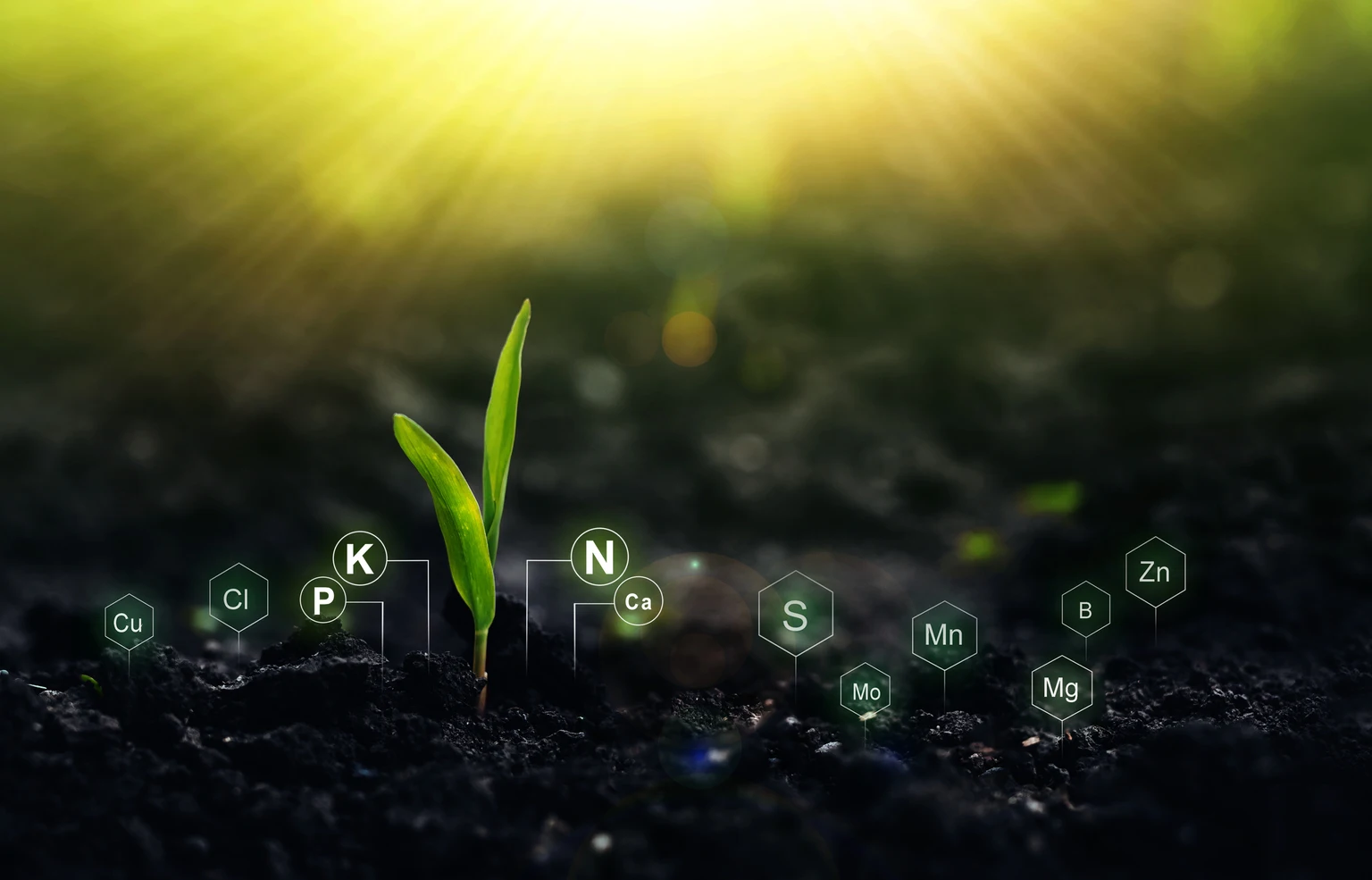
Container gardening vegetables for small spaces requires more intensive nutritional management than traditional in-ground gardening because containers provide a limited volume of growing medium, and nutrients can be quickly depleted or washed away through frequent watering. Understanding and implementing proper fertilisation strategies ensures robust plant growth and abundant harvests from small-space gardening systems.
Nutrient depletion occurs much more rapidly in containers than in garden beds because plant roots are confined to a small volume of growing medium. Additionally, frequent watering required for container plants leaches nutrients from the soil more quickly than in traditional gardens. This accelerated nutrient loss necessitates regular fertilization to maintain optimal plant health and productivity.
Slow-release fertilisers provide an excellent foundation for container vegetable gardening nutrition programs. These granular fertilizers release nutrients gradually over 3-6 months, providing consistent nutrition without the risk of fertilizer burn that can occur with quick-release formulations. Apply slow-release fertiliser according to package directions at planting time, mixing it into the top few inches of growing medium.
Liquid fertilisation supplements slow-release fertilisers and provide immediate nutrition for rapidly growing vegetables. Weekly applications of diluted liquid fertiliser during the growing season support vigorous growth and abundant production. Organic options like fish emulsion, kelp meal extract, or compost tea provide gentle, naturally balanced nutrition that won’t burn sensitive plants.
Organic nutrition approaches offer sustainable, environmentally friendly options for urban container gardening. Compost provides slow-release nutrients while improving soil structure and water retention. Worm castings deliver gentle, immediately available nutrients in perfect balance for vegetable production. Organic fertilisers like blood meal, bone meal, and kelp meal can be mixed into containers at planting time.
Nutrient deficiency recognition becomes crucial for maintaining healthy plants in confined growing systems. Yellowing leaves may indicate nitrogen deficiency, purple leaf edges can signal phosphorus shortage, and brown leaf margins often indicate potassium deficiency. Regular observation and quick response to nutritional issues prevent minor problems from becoming major setbacks.
Space Optimisation Techniques
Maximizing productivity in container gardening vegetables for small spaces requires strategic space utilization techniques that extract the highest possible yields from limited growing areas. Vertical container gardening represents the most effective approach to multiplying growing space without expanding the footprint of your garden area.
Tiered growing systems create multiple levels of growing space using shelving units, plant stands, or custom-built structures. These systems allow sun-loving plants on upper levels while shade-tolerant vegetables thrive below. Proper planning ensures each level receives adequate light while maximising the total number of plants that can be accommodated in a small area.
Wall-mounted planters transform vertical surfaces into productive growing areas, perfect for apartment balcony gardening where floor space is limited. Pocket planters, hanging systems, and modular wall units can accommodate dozens of plants while creating attractive living walls. These systems work particularly well for herbs, leafy greens, and small fruiting vegetables like cherry tomatoes.
Succession planting extends harvests throughout the growing season while maximizing container utilization. Rather than planting all vegetables at once, stagger plantings every 2-3 weeks to ensure continuous harvests. Fast-growing crops like radishes and lettuce can be succession planted in the same containers, providing fresh harvests all season long.
Companion planting strategies maximize container productivity by growing compatible vegetables together in the same container. Classic combinations like tomatoes with basil, carrots with chives, or lettuce with spinach make efficient use of container space while often providing mutual benefits like pest deterrence or improved flavour.
Interplanting techniques utilise the different maturation rates of vegetables to maximise container space efficiency. Fast-growing crops like radishes or lettuce can be planted between slower-growing vegetables like peppers or tomatoes. The quick crops are harvested before the larger plants need the full space, effectively getting two crops from one container.
Seasonal Planning and Year-Round Growing
Strategic seasonal planning transforms container gardening vegetables for small spaces from a simple warm-season activity into a year-round food production system. Understanding how to leverage the mobility and control advantages of containers enables continuous harvests regardless of outdoor growing conditions.
Spring preparation begins the growing season with cool-season crops that tolerate cooler temperatures and shorter days. Lettuce, spinach, peas, and radishes can be started in containers weeks before the last frost date because containers can be easily moved to protected areas during cold snaps. Starting plants early extends the productive season and provides fresh vegetables when grocery store prices are typically highest.
Summer intensification represents the peak productive period for small-space vegetable growing when warm-season crops like tomatoes, peppers, eggplants, and beans reach full productivity. During this period, focus on maintaining adequate water and nutrients while implementing heat protection strategies like afternoon shade or reflective mulches in extremely hot climates.
Fall transitions offer opportunities to continue harvests with cool-season crops that actually improve in flavor after light frosts. Kale, Brussels sprouts, and winter varieties of lettuce can be planted in late summer for fall and winter harvests. The ability to move containers allows gardeners to extend the growing season by relocating plants to protected areas during harsh weather.
Winter growing becomes possible with portable vegetable gardens that can be moved indoors or to protected areas like unheated greenhouses or cold frames. Many leafy greens continue growing slowly during winter months, providing fresh harvests when homegrown vegetables are most appreciated. Indoor growing under artificial lights expands winter growing possibilities even further.
Season extension techniques maximise the productive capacity of container systems throughout the year. Row covers, cold frames, and greenhouse protection can be easily implemented with containers, allowing gardeners to push the boundaries of traditional growing seasons. These techniques are particularly effective for urban container gardening, where microclimates around buildings often provide additional protection.
Troubleshooting Common Issues
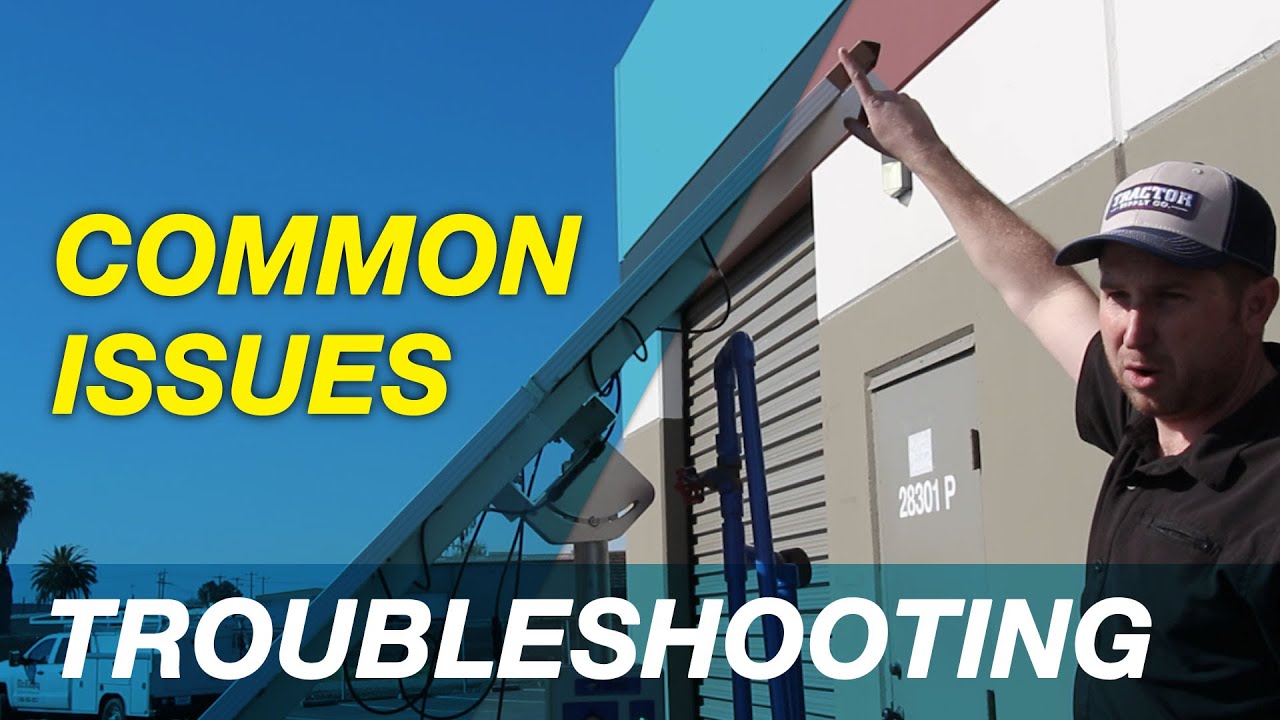
Even the most carefully planned container gardening systems for small spaces encounter challenges that require prompt identification and resolution to maintain healthy, productive plants. Understanding common problems and their solutions prevents minor issues from becoming major setbacks in small-space gardening endeavours.
Overwatering symptoms include yellowing leaves, wilting despite moist soil, and fungal growth on the soil surface. This common problem occurs because containers don’t allow excess water to drain away as effectively as garden beds. Solutions include improving drainage holes, adjusting watering frequency, and ensuring containers have adequate drainage material.
Underwatering signs manifest as wilting during the heat of the day, dry soil pulling away from container edges, and stunted growth. Container plants dry out much faster than in-ground plants, particularly during hot weather or windy conditions. Increase watering frequency, add mulch to reduce evaporation, and consider larger containers that hold more moisture.
Nutrient deficiencies appear as yellowing leaves, poor growth, or reduced fruit production. The confined root system and frequent watering in container vegetable gardening can quickly deplete available nutrients. Regular fertilisation with both slow-release and liquid fertilisers addresses most nutritional issues.
Pest management in containers requires integrated approaches that combine prevention, monitoring, and treatment strategies. Common pests like aphids, spider mites, and whiteflies can quickly overwhelm plants in the confined space of containers. Regular inspection, beneficial insect habitats, and organic treatment options maintain healthy plants without chemical interventions.
Root binding occurs when plants outgrow their containers, creating circular root masses that prevent proper nutrient and water uptake. This condition manifests as stunted growth, frequent wilting, and reduced productivity. Solutions include transplanting to larger containers, root pruning, or succession planting with fresh plants.
Advanced Container Gardening Techniques
Experienced practitioners of container gardening vegetables for small spaces can implement advanced techniques that further increase productivity, extend growing seasons, and create more sophisticated growing systems. These methods transform basic container gardens into highly efficient food production systems suitable for serious urban container gardening applications.
Hydroponic container systems eliminate soil, growing plants in nutrient-rich water solutions. These systems offer faster growth rates, higher yields, and complete control over plant nutrition. While requiring more initial investment and technical knowledge, hydroponic containers can produce remarkable results in minimal space, making them ideal for apartment balcony gardening where every square inch matters.
Aquaponic integration combines fish raising with vegetable production in closed-loop systems where fish waste provides nutrients for plants while plants filter water for fish. These systems create sustainable, productive ecosystems that generate both vegetables and protein in minimal space. Advanced aquaponic containers can support substantial food production in areas no larger than a typical balcony.
Greenhouse container systems extend growing seasons and enable year-round production in climate-controlled environments. Portable greenhouse structures combined with container gardens create ideal growing conditions regardless of outdoor weather. These systems are particularly valuable for small space vegetable growing in harsh climates where outdoor growing seasons are limited.
Automated monitoring systems use sensors and controllers to maintain optimal growing conditions with minimal human intervention. Soil moisture sensors, pH monitors, and environmental controls ensure consistent growing conditions while reducing maintenance requirements. These advanced systems are particularly valuable for busy urban gardeners who want to maintain productive gardens with limited time investment.
Breeding and seed saving programs enable container gardeners to develop varieties specifically adapted to their growing conditions and preferences. Over time, saved seeds from the best-performing plants create strains perfectly suited to local container growing conditions, resulting in improved yields and plant health.
More Read: Top Vegetables to Grow in Your Backyard
Conclusion
Container gardening vegetables for small spaces represents far more than a simple gardening technique; it embodies a complete philosophy of sustainable, accessible food production that transforms any available space into a productive growing area. Through the comprehensive strategies outlined in this guide, gardeners of all experience levels can create thriving vegetable gardens regardless of their spatial limitations.
The journey from novice to expert in small-space vegetable growing requires patience, experimentation, and continuous learning, but the rewards extend far beyond simple food production. Container gardens provide fresh, nutritious vegetables while creating beautiful, green spaces that enhance quality of life in urban environments. The skills developed through urban container gardening foster deeper connections with food sources and seasonal cycles that are often lost in modern urban living.
As cities continue to grow and available growing space becomes increasingly limited, container vegetable gardening offers a sustainable solution that empowers individuals to take control of their food security while reducing environmental impact. The techniques and strategies presented here provide the foundation for lifelong growing success, enabling gardeners to adapt and expand their systems as their knowledge and confidence grow.
The future of urban food production lies in innovative approaches like vertical container gardening and advanced growing systems that maximise productivity while minimising resource consumption. By mastering these fundamental techniques and gradually implementing more advanced strategies, container gardeners contribute to a more sustainable and resilient food system while enjoying the immediate benefits of fresh, homegrown vegetables.
Success in portable vegetable gardens comes from understanding that limitations often spark the greatest innovations. The constraints of small spaces, limited resources, and urban environments have driven the development of incredibly efficient growing systems that often outproduce traditional gardens on a per-square-foot basis. Embrace these challenges as opportunities to develop creative solutions and discover the remarkable potential hidden within even the smallest growing spaces.

